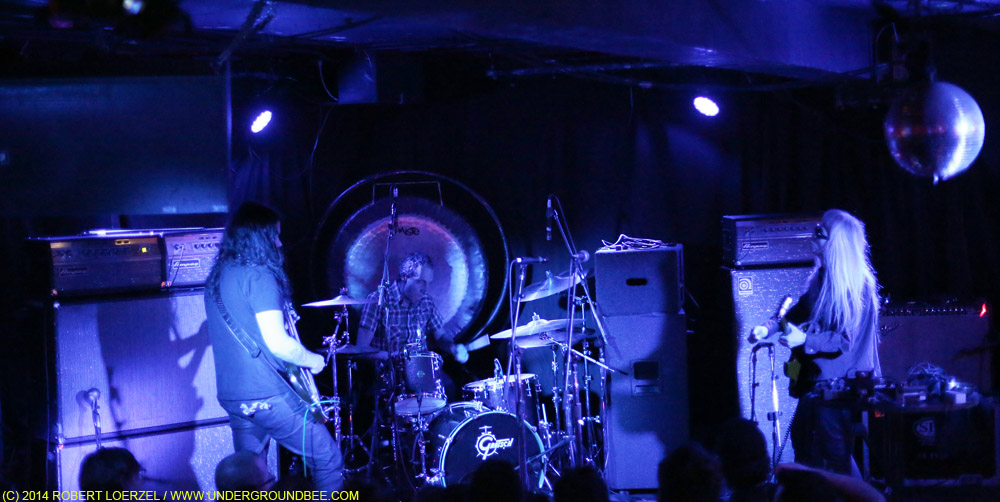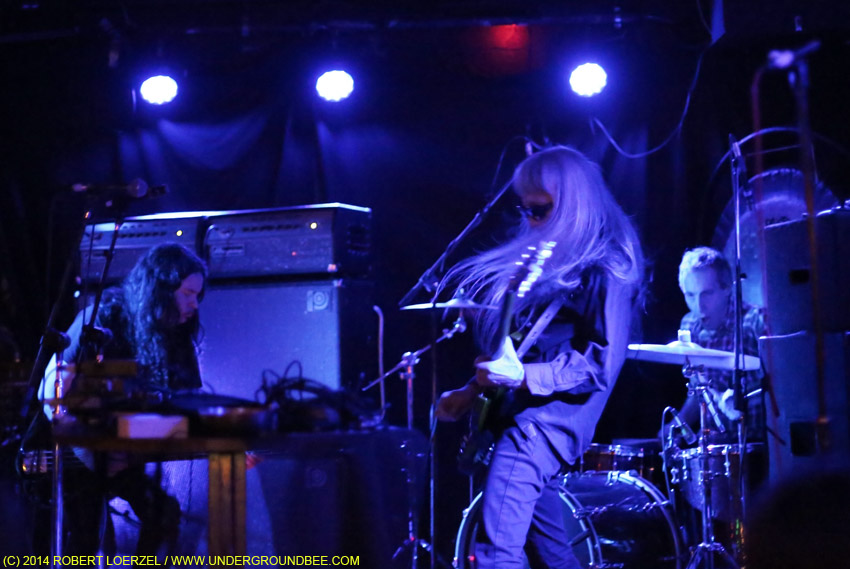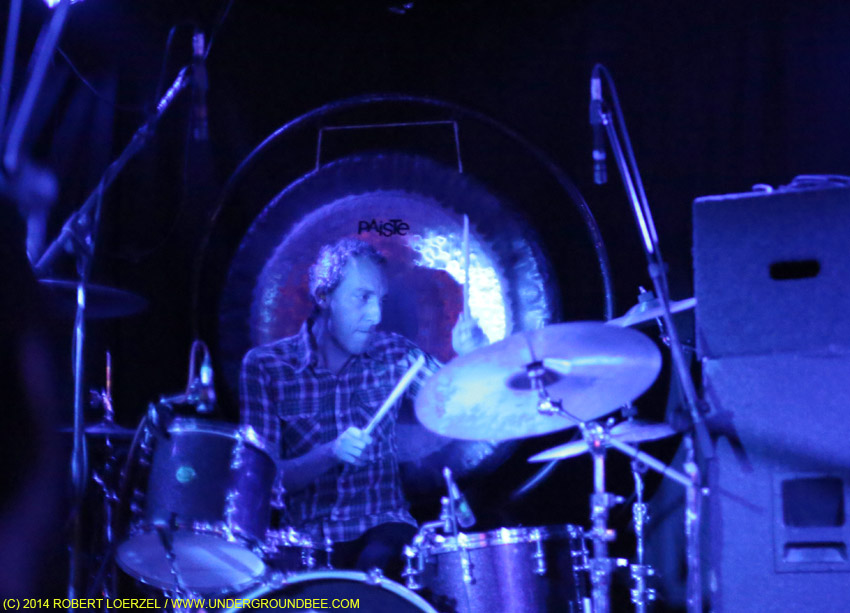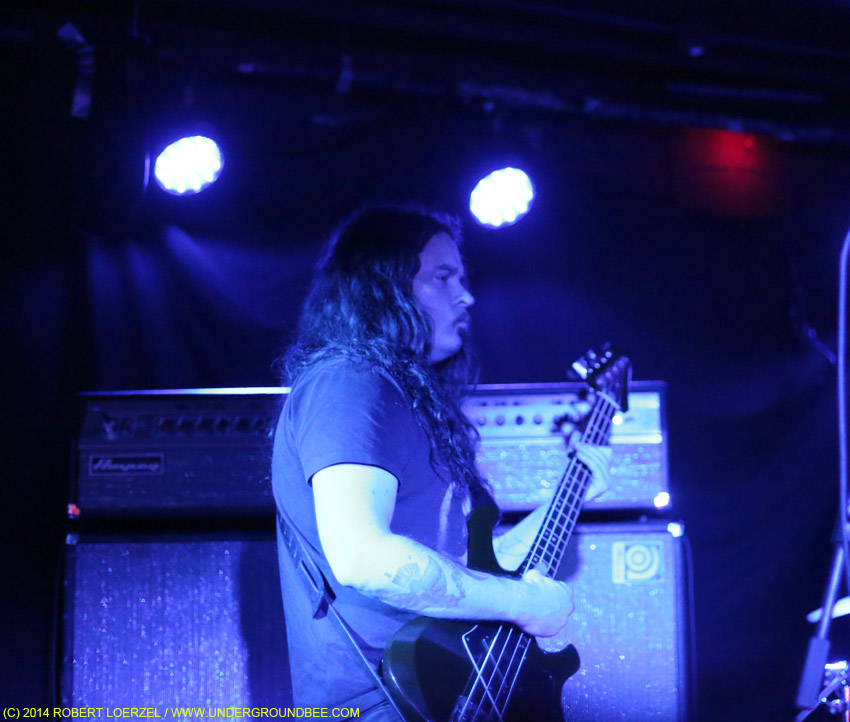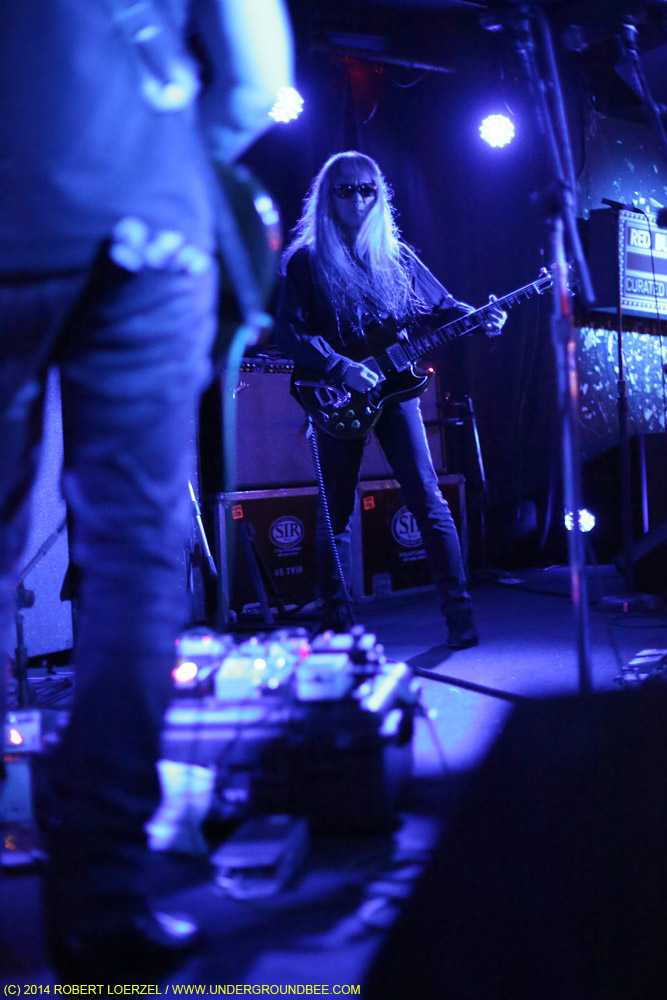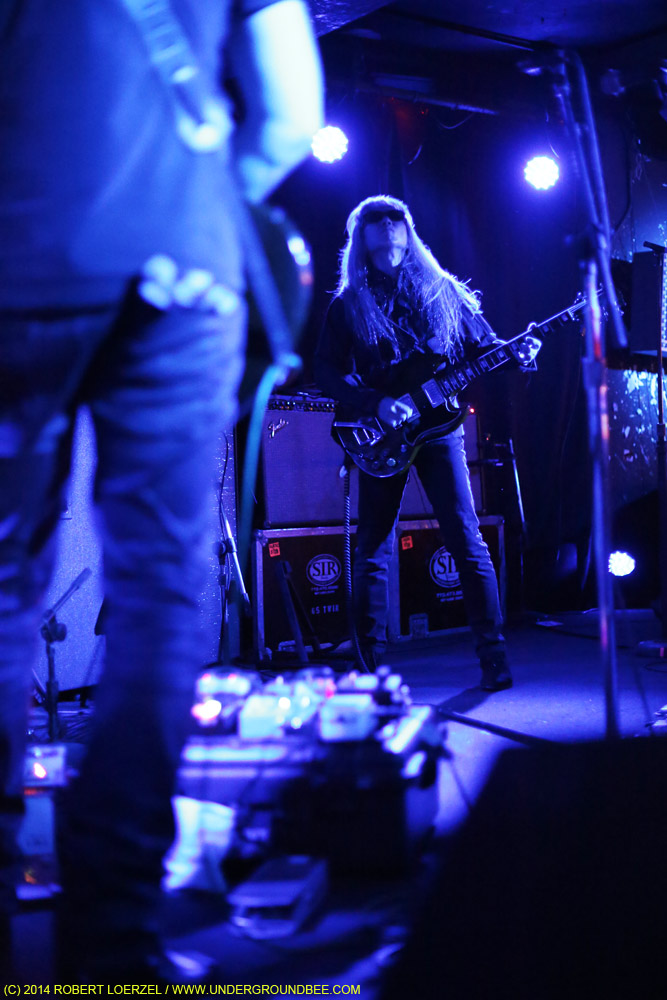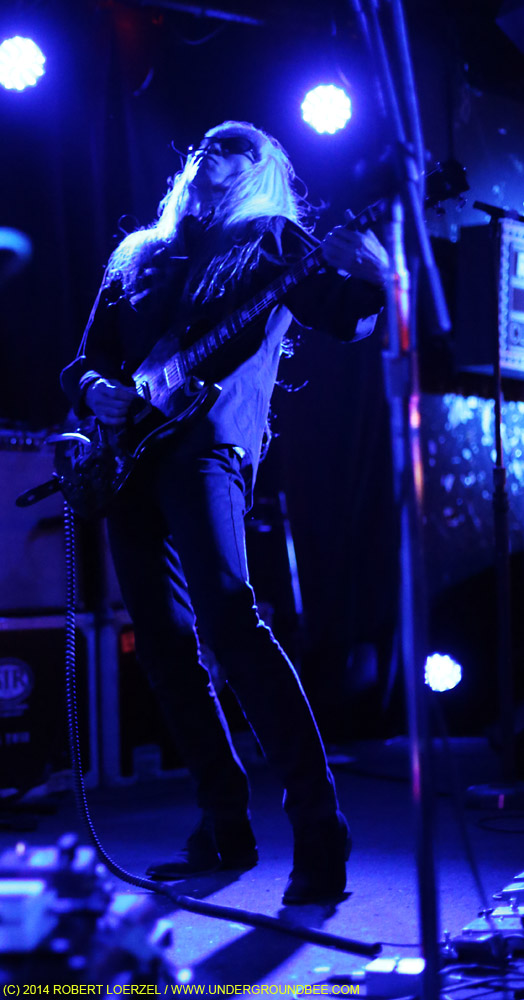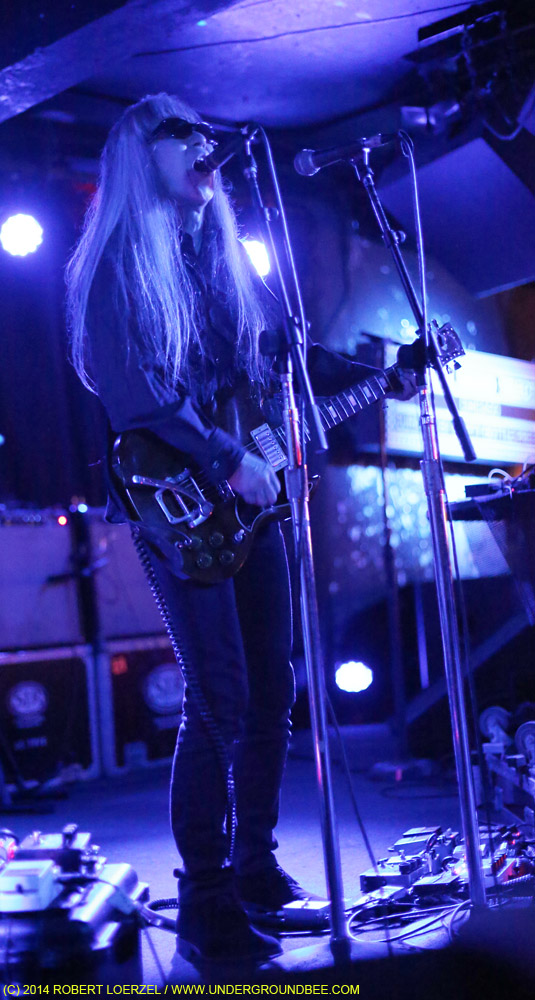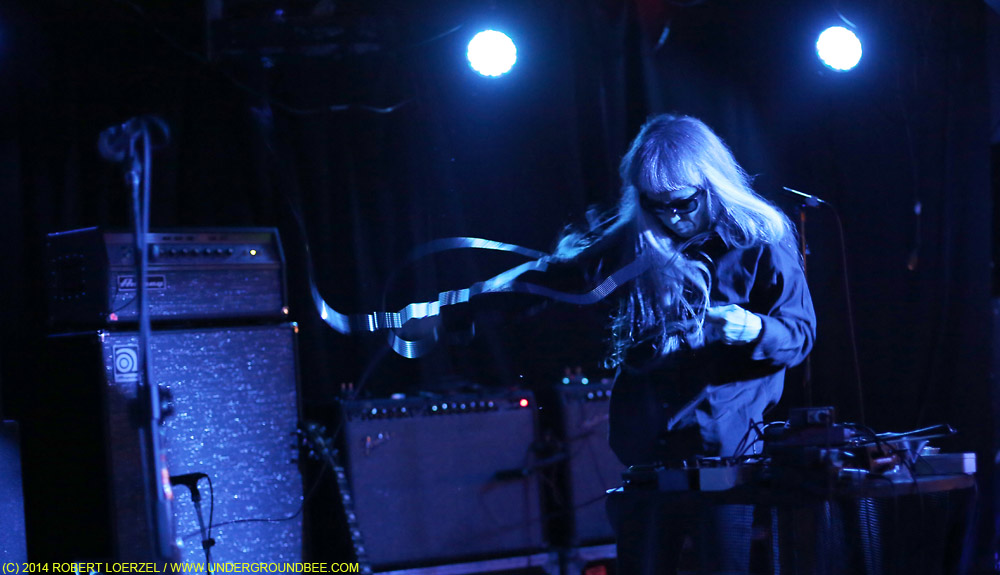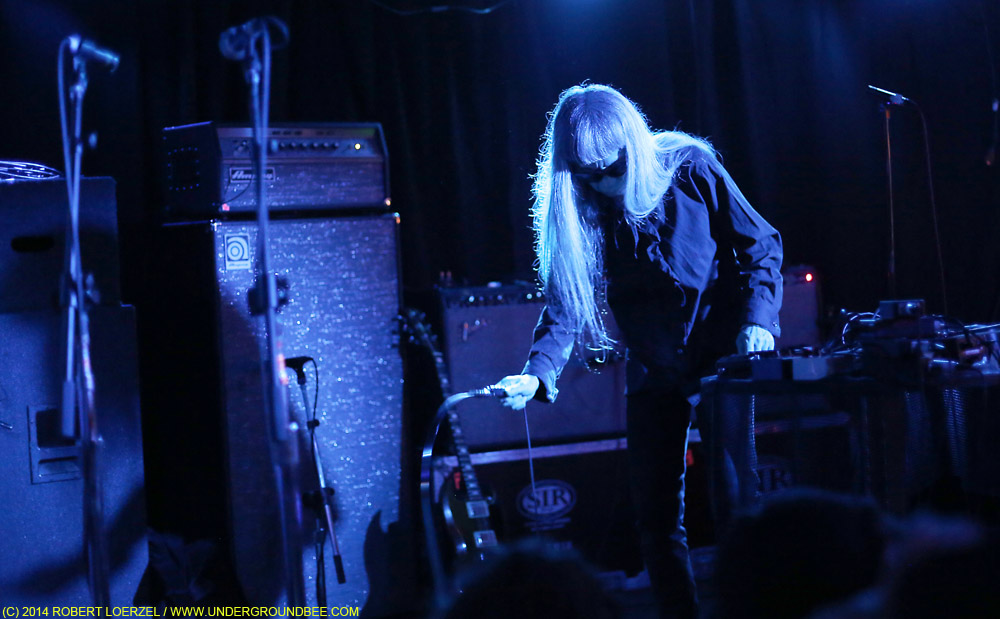At 11:34 p.m. May 20, I tweeted: This Nazoranai show at @theemptybottle is so loud it might cause a rupture in the cosmic fabric. I was joking, but I was half-serious. This band’s music was so loud — and, at times, so otherworldly — that it was downright disorienting. The cosmic fabric did not, in fact, rupture Tuesday night at the Empty Bottle, but the sensory experience was jarring. At one point, when I pulled my cellphone out of my pocket (maybe it was the moment when I tweeted), I could feel the thundering vibrations from Stephen O’Malley’s bass guitar pulsing in my phone — as if the phone were vibrating because of an incoming call. I’m sure glad I was wearing earplugs.
Beyond the intense decibel levels, the music itself was powerful, shifting from pulverizing metal riffs into strange sonic shapes, far removed from the standard structure of rock songs. The names of the tracks on Nazoranai’s self-titled 2012 album give you a pretty good idea of the sort of effect this trio creates with its noise. One song is called, “Feel the Ultimate Joy Towards the Resolve of Pillar Being Shattered Within You Again and Again and Again,” and another is titled, “Not a Joy to Come Closer but So-called a Sacred Insanity Has Finally Appeared.”
Nazoranai is something of a supergroup in the realm of experimental rock. The trio comprises Japanese guitarist Keiji Haino, Stephen O’Malley of Sunn O)) and Australian drummer Oren Ambarchi. New York Times critic Ben Ratliff put Nazoranai’s 2012 record (its only album thus far) at No. 2 on his list of the year’s best releases, writing that Haino
plays gesturally, with no traditional technique, turning ritual motion into sound and engaging the room’s echo with falsetto chants or mangled screams. In Japanese the band’s name means “I do not trace,” in the sense of a student of drawing or music tracing a master’s lines. Though some tracks on its new self-titled live album (Ideologic Organ/Mego) introduce slow, steady, Band of Gypsys-like drum grooves, the rest is open, meditative, sometimes miraculous and mostly terrifying.
Speaking of playing gesturally, Haino set down his guitar during one passage on Tuesday night and used a metal ribbon as a sort of whip to generate noise.
In an interview this spring with Brooklyn Vegan, O’Malley explained Nazoranai’s approach:
It’s pure improvisation. I’m going to try and avoid as many clichés as I can here, in talking about improvisation. That’s the whole thing, though. It’s not a cliché — the idea is that I don’t know what the idea is. The idea is in the present, so everything that happens is happening right then, and will probably never be repeated. Even stylistic tendencies, I’ve noticed, have been completely different every time we play together. I really appreciate Mr. Haino for that. I mean, he is the conductor of the group, you know? That’s why we are the rhythm section. In my fantasy world, and Oren’s, it is a rock ’n’ roll power trio. Maybe Mr. Haino thinks that too, and maybe it is, but it’s just coming from a different angle. That’s why I play bass and Oren plays drums, we want to be rhythm section. We love Mr. Haino’s guitar playing, especially. We want to be the rhythm section so he can play guitar leads, you know? We’re right there, we get to hear it and see it very closely, and we get to participate in that way. We are not a backing band at all; the whole character of that music is not that way of course. I can just say what is happening from my perspective. It’s an interesting exercise in patience, in trance, in timbre and in alertness as a player.
